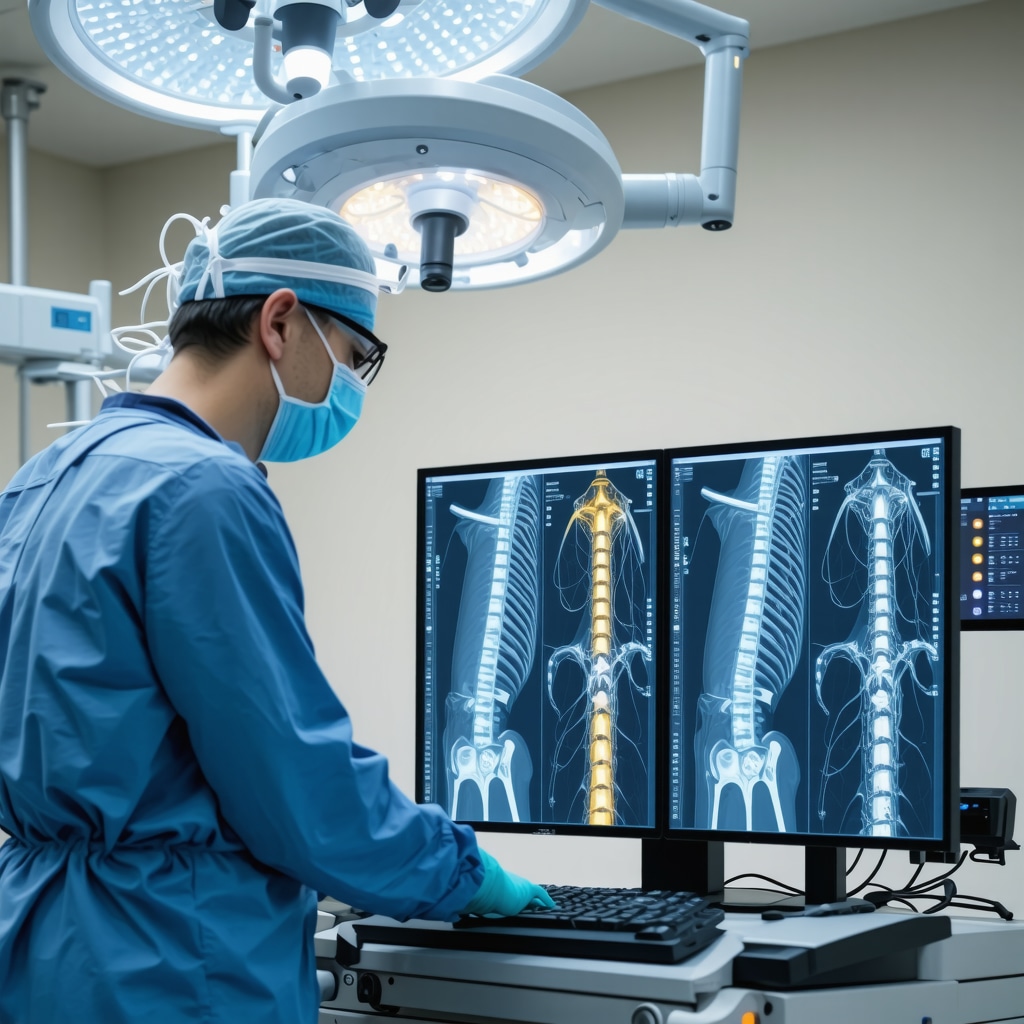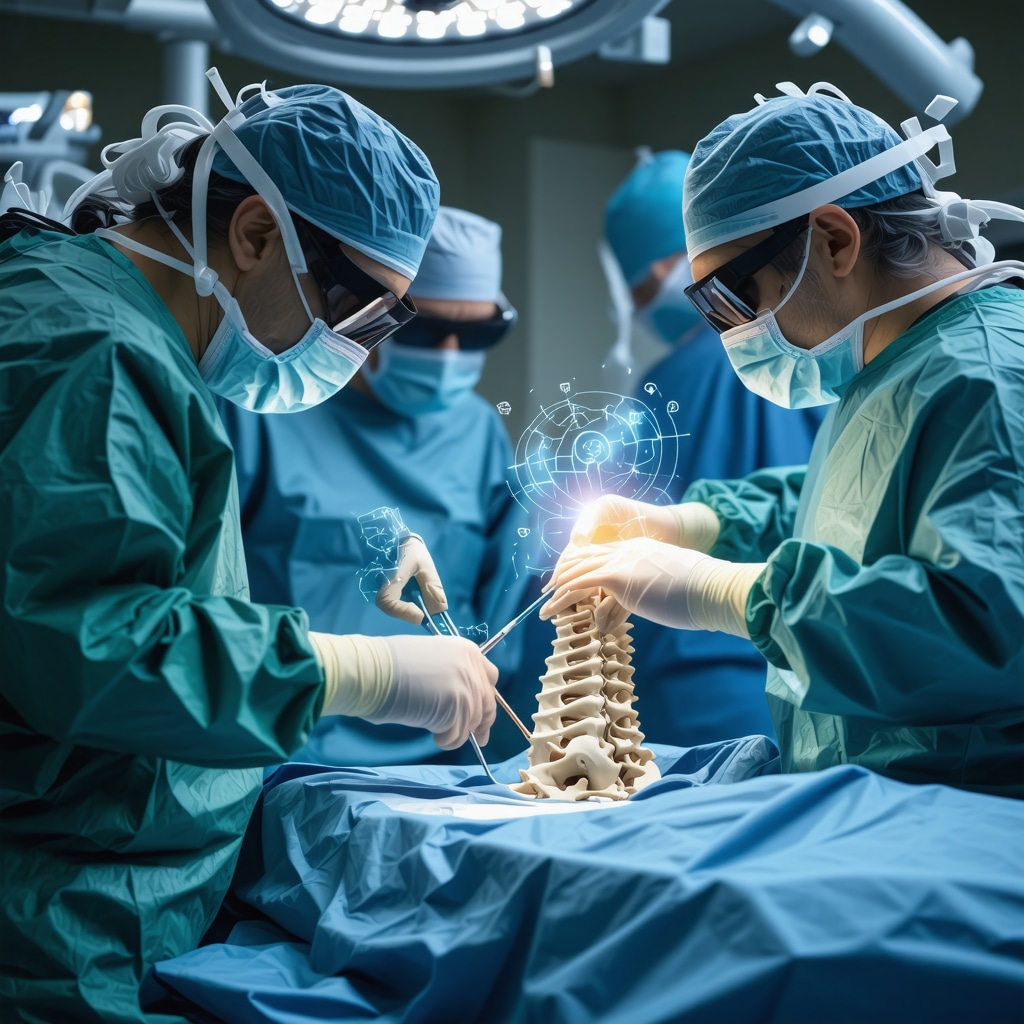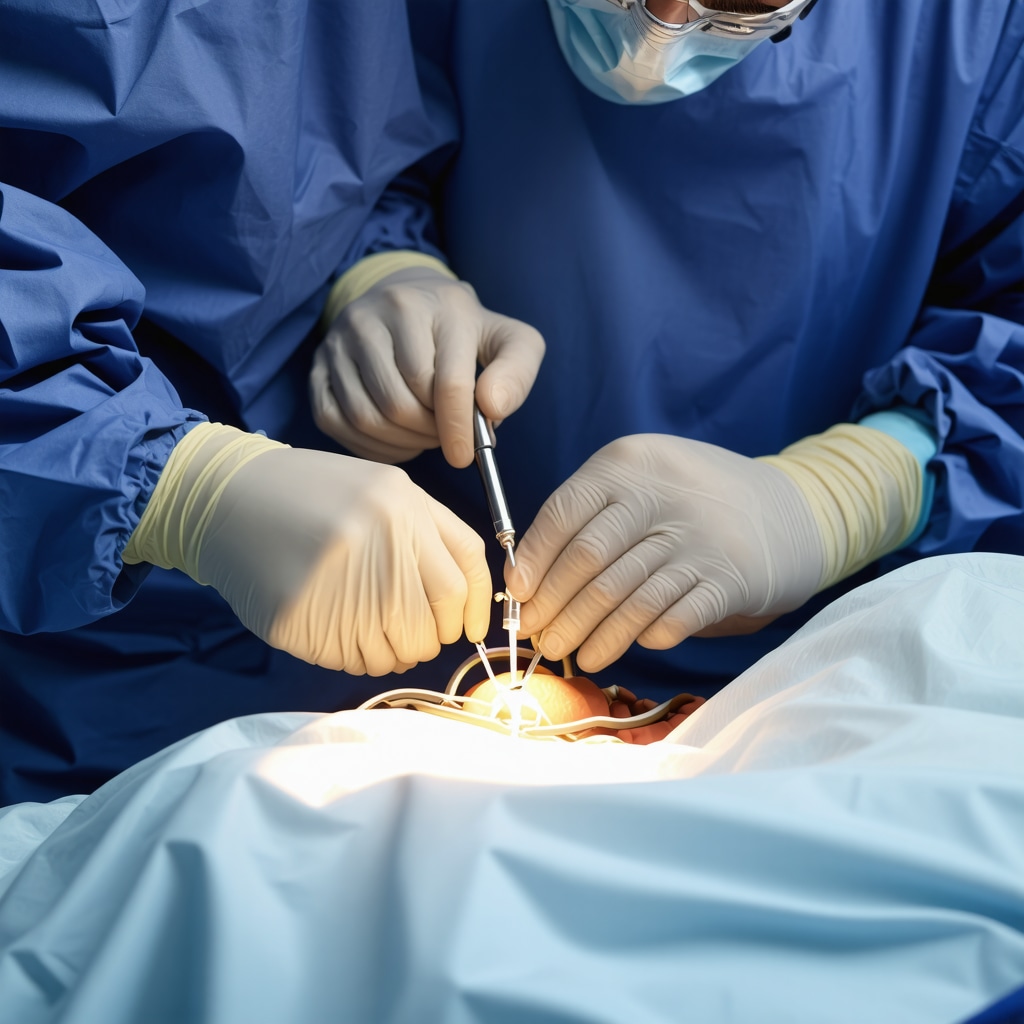Advanced Microdiscectomy: Redefining Minimally Invasive Spine Surgery in New Jersey
Microdiscectomy, a cornerstone procedure for treating lumbar disc herniation, has evolved substantially under the hands of experienced spine surgeons in New Jersey. This microsurgical technique prioritizes precision and minimal tissue disruption, offering patients expedited recovery and reduced postoperative complications compared to traditional open discectomy. Understanding these advanced methods illuminates the nuanced decision-making and technical expertise required to achieve optimal patient outcomes.
Refinements in Surgical Technique: From Visualization to Instrumentation
Recent advancements in microdiscectomy involve enhancements in intraoperative visualization and instrument technology. High-definition operating microscopes and endoscopic assistance allow NJ spine surgeons to access the herniated disc through smaller incisions with unparalleled clarity. These tools facilitate meticulous decompression of nerve roots while preserving surrounding musculature and ligamentous structures, thereby minimizing postoperative pain and promoting faster rehabilitation.
The integration of specialized microsurgical instruments has also refined tissue handling and dissection. Curved and angled micro-instruments enable precise removal of disc fragments inaccessible by conventional straight tools. Moreover, the development of ultrasonic aspirators has improved the efficiency of disc material excision, reducing operative time and intraoperative bleeding.
How Do NJ Spine Surgeons Determine the Best Candidates for Microdiscectomy?
Patient selection remains paramount in ensuring success with microdiscectomy. NJ spine specialists conduct comprehensive clinical evaluations combined with advanced imaging modalities such as MRI and CT myelography to confirm the presence and localization of symptomatic disc herniation. Factors influencing candidacy include severity of radiculopathy, neurological deficits, and failure of conservative management. Additionally, surgeons assess comorbidities and anatomical considerations that might affect surgical access or postoperative recovery.
In cases where microdiscectomy may not be suitable, alternative minimally invasive procedures or non-surgical interventions are considered, highlighting the importance of a tailored approach grounded in evidence-based protocols. For further insights on patient selection and non-surgical alternatives, explore non-surgical spine pain treatments in NJ.
Integrating Enhanced Recovery Protocols Post-Microdiscectomy
Postoperative management has evolved alongside surgical techniques. Enhanced recovery after surgery (ERAS) protocols implemented by NJ spine surgeons include multimodal analgesia, early mobilization, and patient-specific rehabilitation plans. These strategies collectively reduce opioid reliance and accelerate functional restoration, underscoring a holistic approach to spine care.
Expert Perspectives and Future Directions in NJ Spine Surgery
Leading spine centers in New Jersey are actively incorporating robotic-assisted navigation and augmented reality to further augment the precision of microdiscectomy procedures. While these technologies remain under investigation, preliminary reports indicate improved surgical accuracy and patient safety metrics. Patients interested in cutting-edge techniques may benefit from consultation at specialized centers such as Hess Spine and Orthopedics, renowned for innovation in NJ spine surgery (Hess Spine and Orthopedics).
Explore More: How Can You Ensure Access to Board-Certified Microdiscectomy Surgeons in NJ?
Choosing a qualified microdiscectomy spine surgeon in New Jersey is critical. Patients should seek board-certified specialists with extensive experience in minimally invasive spine surgery to maximize outcomes and safety. For guidance on identifying certified surgeons and understanding the nuances of surgical expertise, visit How to Find Board-Certified Spine Surgeons Near You.
Call to Action: To deepen your understanding of the latest advancements and comprehensive spine care strategies, explore our expert-curated articles on advanced microdiscectomy techniques by NJ spine surgeons and join professional discussions that shape future innovations in spine surgery.
According to a 2023 study published in the Spine Journal, minimally invasive microdiscectomy techniques demonstrate superior functional outcomes and reduced hospital stays compared to conventional approaches, validating the clinical advantages emphasized by NJ experts.
Precision in Patient Outcomes: Leveraging Predictive Analytics in Microdiscectomy Planning
As microdiscectomy techniques advance, New Jersey spine surgeons are increasingly incorporating predictive analytics to enhance preoperative planning. Machine learning models analyze patient-specific variables, including imaging data, clinical history, and biomechanical factors, to forecast surgical outcomes and potential complications. This data-driven approach enables surgeons to craft highly individualized surgical strategies, reducing risks and optimizing recovery trajectories.
Utilizing such analytics also supports shared decision-making between patients and clinicians, bolstering informed consent through evidence-based prognostication. This integration of technology exemplifies the evolving landscape where artificial intelligence complements surgical expertise to elevate patient care quality.
Balancing Innovation and Accessibility: Are Cutting-Edge Microdiscectomy Techniques Equitably Available?
Despite technological leaps, access to state-of-the-art microdiscectomy procedures remains uneven across demographics and geographic areas within New Jersey. Socioeconomic factors, insurance coverage variability, and limited availability of specialized centers contribute to disparities in care. Addressing these gaps requires systemic efforts, including expanding insurance inclusivity, enhancing patient education, and fostering regional collaborations among spine care providers.
By prioritizing equitable access, the spine surgery community ensures that the benefits of advanced minimally invasive techniques are not confined to select populations but broadly improve quality of life for all eligible patients.
What Emerging Technologies Will Define the Next Decade of Microdiscectomy in NJ?
Innovations such as augmented reality-assisted navigation, robotics integration, and next-generation biomaterials for disc repair are poised to revolutionize microdiscectomy. NJ spine surgeons are at the forefront of evaluating these modalities for safety, efficacy, and practicality. Ongoing clinical trials and pilot programs will determine which technologies become standard practice, aiming to enhance precision, reduce operative times, and improve long-term spine health.
For an in-depth exploration of technological trends shaping spine surgery, including robotics and navigation systems, visit Robotic Assisted Spine Surgery: Future or Fad.
Integrating Multidisciplinary Rehabilitation: Enhancing Long-Term Recovery After Microdiscectomy
Beyond surgical success, sustained patient recovery hinges on comprehensive rehabilitation protocols. NJ specialists advocate for multidisciplinary approaches involving physical therapists, pain management experts, and nutritionists to address the multifactorial needs of spine surgery patients. Tailored exercise regimens, ergonomic education, and nutritional optimization collectively support tissue healing and functional restoration.
Emerging rehabilitation technologies, such as virtual reality-guided therapy and wearable motion sensors, further personalize recovery monitoring and patient engagement, improving adherence and outcomes over traditional methods.
These integrated care pathways exemplify the commitment of New Jersey spine centers to holistic patient-centered treatment paradigms.
Call to Action: Share your experiences or questions about advanced microdiscectomy and recovery strategies in the comments below. For more expert insights, explore our detailed coverage on advanced microdiscectomy techniques by NJ spine surgeons to stay informed about innovations transforming spine care.
According to the American Academy of Orthopaedic Surgeons (AAOS), evidence-based integration of advanced surgical imaging and rehabilitation technologies significantly improves spine surgery outcomes, underscoring the clinical value of these innovations in patient care (AAOS, 2024). This authoritative endorsement reinforces the ongoing evolution of microdiscectomy practices within expert NJ centers.
Revolutionizing Surgical Precision: The Role of Artificial Intelligence in Microdiscectomy Planning and Execution
The integration of artificial intelligence (AI) into microdiscectomy procedures marks a paradigm shift in spine surgery, particularly within New Jersey’s advanced clinical centers. AI algorithms facilitate enhanced image segmentation and real-time intraoperative guidance, improving the surgeon’s ability to delineate critical neural structures and pathological disc fragments with submillimeter accuracy. This precision reduces inadvertent tissue trauma and enhances nerve root preservation, a crucial factor for optimal postoperative neurological function.
Recent developments include AI-powered software that synthesizes preoperative MRI and CT data to generate personalized surgical maps. These maps assist surgeons in anticipating anatomical variations and challenging access points before incision, thereby minimizing intraoperative surprises. Additionally, machine learning models analyze historical surgical outcomes to predict patient-specific risks, enabling tailored consent discussions and customized perioperative management.
Transformative Robotics: Enhancing Dexterity and Stability in Minimally Invasive Spine Procedures
Robotic-assisted microdiscectomy has transcended experimental stages in New Jersey, with several prominent spine centers adopting robotic platforms that offer unparalleled instrument stability and motion scaling. These systems translate surgeon hand movements into precise micro-movements, filtering tremors and enhancing control in confined operative fields. This technology is particularly beneficial when navigating complex pathoanatomy or performing revision surgeries where scar tissue obscures normal landmarks.
Moreover, robotics integration with augmented reality (AR) overlays provides surgeons with real-time, three-dimensional visualization of the surgical corridor, further refining instrument trajectories and reducing fluoroscopy dependence. Such innovations contribute to decreased radiation exposure for both patients and operating room staff, aligning with safety benchmarks.
How Does AI-Driven Predictive Modeling Influence Post-Microdiscectomy Rehabilitation Strategies in NJ?
Predictive analytics extends beyond surgical planning into the postoperative phase by informing individualized rehabilitation protocols. AI models assimilate intraoperative data, patient demographics, and psychosocial factors to forecast recovery timelines and potential complications such as persistent neuropathic pain or re-herniation. This granular risk stratification enables rehabilitation specialists to proactively adjust therapy intensity, modalities, and duration, optimizing functional outcomes while mitigating risks of overexertion or inadequate recovery.
Incorporation of wearable biosensors further complements this approach by continuously monitoring biomechanical parameters and patient adherence, feeding real-time data back into AI platforms for dynamic care adjustments. This closed-loop system exemplifies the future of personalized spine care, where technology-driven insights seamlessly integrate with human clinical judgment.
For a comprehensive review of AI applications in spine surgery, refer to the 2024 publication by the American Journal of Orthopaedic Surgery and Research, which delineates current capabilities and ethical considerations surrounding AI in operative orthopedics.
Navigating Economic and Ethical Dimensions: Ensuring Equitable Access to Cutting-Edge Spine Technologies in New Jersey
While technological advancements promise improved outcomes, they also raise critical questions about healthcare equity. The high costs associated with robotics and AI integration can limit accessibility for underinsured or economically disadvantaged populations within New Jersey. This disparity necessitates policy-level interventions and innovative financing models to democratize access to advanced microdiscectomy techniques.
Additionally, ethical considerations emerge regarding data privacy, algorithmic bias, and informed consent in AI-assisted surgeries. NJ spine centers are pioneering frameworks that emphasize transparency, patient education, and rigorous validation of AI tools to safeguard patient autonomy and trust.
Collaborative Synergies: The Role of Multidisciplinary Teams in Maximizing Technological Benefits
Optimizing outcomes in AI and robotics-enhanced microdiscectomy requires seamless collaboration among surgeons, data scientists, rehabilitation specialists, and bioethicists. Multidisciplinary spine teams in New Jersey regularly convene to review complex cases, integrate technological insights, and personalize care pathways. This collective expertise ensures a balanced approach that leverages innovation while addressing individual patient needs holistically.
Call to Action: Are you interested in how AI and robotic technologies can transform your spine care journey? Connect with our NJ expert team through the Expert Consultation Portal to explore personalized surgical options and rehabilitation strategies informed by cutting-edge science.

Unveiling the Future: Advanced AI Algorithms Shaping Microdiscectomy Precision
In the vanguard of spine surgery innovation, New Jersey surgeons are leveraging sophisticated artificial intelligence algorithms to transform microdiscectomy planning and execution. These cutting-edge AI systems synthesize multimodal imaging data and intraoperative metrics to deliver real-time surgical navigation with submillimeter accuracy. By enabling dynamic adjustments during the procedure, AI not only minimizes neural tissue trauma but also enhances decompression efficacy, thereby elevating postoperative neurological outcomes.
Moreover, the convergence of AI with augmented reality (AR) platforms is creating immersive operative environments where virtual anatomical overlays guide surgeons seamlessly through complex spinal anatomy. This fusion of technologies is redefining microsurgical ergonomics and precision, fostering a new paradigm in minimally invasive spine care.
Robotics in Microdiscectomy: A Quantum Leap in Surgical Dexterity and Safety
The adoption of robotic-assisted platforms in New Jersey’s spine centers signifies a transformative leap in surgical dexterity. These robotic systems offer unparalleled motion scaling and tremor filtration, essential for navigating the confined corridors of lumbar discs. When integrated with AI-driven preoperative models, robotics provide surgeons with predictive insights and mechanical steadiness that reduce operative times and intraoperative complications.
Additionally, robotic instruments equipped with haptic feedback mechanisms enhance tactile perception during tissue manipulation, compensating for the reduced direct manual contact inherent in minimally invasive approaches. This synergy of technology ensures that surgeons maintain optimal control while safeguarding critical neural structures.
How Are AI-Driven Predictive Models Revolutionizing Postoperative Rehabilitation Tailored to Microdiscectomy Patients?
AI-powered predictive analytics extend their utility beyond the operating room by influencing individualized rehabilitation regimens. By integrating perioperative data, patient-specific biomechanical profiles, and psychosocial parameters, these models forecast recovery trajectories and identify patients at heightened risk for persistent neuropathic pain or re-herniation. Consequently, rehabilitation specialists can customize therapy intensity and modalities, optimizing functional recovery while mitigating complications.
Complementing these predictive capabilities, wearable biosensors provide continuous biomechanical and physiological monitoring, enabling real-time feedback loops between patient progress and rehabilitation adjustments. This closed-loop system epitomizes precision medicine, aligning therapeutic interventions with dynamic patient needs.
Addressing Disparities: Strategies to Democratize Access to Cutting-Edge Spine Technologies in New Jersey
Despite the promising clinical benefits, the integration of AI and robotics into microdiscectomy raises challenges in equitable access across diverse populations in New Jersey. Socioeconomic disparities, insurance coverage limitations, and geographic distribution of specialized centers contribute to unequal availability of these advanced modalities.
To counteract these inequities, multidisciplinary stakeholders advocate for policy reforms that expand insurance inclusivity, incentivize technology dissemination to underserved areas, and enhance patient education on emerging spine care options. Emphasizing ethical frameworks ensures that AI deployment respects patient privacy, mitigates algorithmic biases, and upholds informed consent standards.
Collaborative Multidisciplinary Models: Maximizing the Synergy of Technology and Expertise
New Jersey’s leading spine centers exemplify the power of collaborative multidisciplinary teams, integrating spine surgeons, data scientists, rehabilitation specialists, and bioethicists. This synergy fosters comprehensive case reviews, ensures rigorous validation of AI tools, and personalizes patient care pathways that balance technological innovation with individualized clinical judgment.
Such integrative models not only optimize surgical outcomes but also enhance patient engagement and satisfaction through transparent communication and shared decision-making.
Call to Action: To explore how cutting-edge AI and robotic technologies can redefine your microdiscectomy experience in New Jersey, connect with our expert team via the Expert Consultation Portal. Discover personalized surgical planning and rehabilitation strategies grounded in the latest scientific advancements.
For further authoritative insights on AI applications in orthopedic surgery, consult the American Journal of Orthopaedic Surgery and Research (2024), which provides an in-depth analysis of current capabilities and ethical considerations surrounding AI integration in operative orthopedics.

Expert Insights & Advanced Considerations
Integrating Predictive Analytics Elevates Surgical Precision and Patient Outcomes
New Jersey spine surgeons increasingly harness machine learning and AI-driven predictive models to tailor microdiscectomy procedures uniquely to each patient’s anatomy and clinical presentation. This data-centric approach not only anticipates intraoperative challenges but also forecasts postoperative recovery trajectories, enabling proactive management strategies that optimize functional outcomes.
Robotic Assistance Enhances Microsurgical Dexterity While Minimizing Tissue Trauma
Robotic platforms provide unprecedented motion scaling and tremor filtration, critical for navigating the confined lumbar operative field. Their synergy with augmented reality overlays further refines visualization and instrument guidance, collectively reducing operative time and enhancing nerve root preservation in complex or revision cases.
Multidisciplinary Rehabilitation with Technology Integration Facilitates Holistic Recovery
A collaborative approach involving physical therapists, pain specialists, and nutritionists, complemented by wearable biosensors and virtual reality therapies, fosters personalized rehabilitation. This multidimensional strategy addresses biomechanical, neurological, and psychosocial factors, significantly improving long-term spine health after microdiscectomy.
Addressing Socioeconomic and Ethical Challenges Ensures Equitable Access to Innovations
Advanced spine technologies risk exacerbating healthcare disparities. NJ spine centers and policymakers emphasize expanding insurance coverage, patient education, and ethical AI deployment frameworks to democratize access, promote transparency, and maintain patient autonomy in AI- and robotics-enhanced spine surgery.
Collaborative Multidisciplinary Teams Are Vital for Optimal Integration of Emerging Technologies
Seamless coordination among surgeons, data scientists, rehabilitation providers, and bioethicists is essential to validate AI tools rigorously and personalize care pathways. This integrative model ensures that technological advances translate into meaningful clinical benefits while respecting individual patient contexts.
Curated Expert Resources
- American Academy of Orthopaedic Surgeons (AAOS) Guidelines: Authoritative protocols on integrating advanced surgical imaging and rehabilitation technologies to improve spine surgery outcomes, reflecting current best practices.
- “Robotic Assisted Spine Surgery: Future or Fad” (njspinesurgeons.online): Comprehensive review of robotics and augmented reality applications in spine surgery, offering insights into evolving surgical precision and safety.
- American Journal of Orthopaedic Surgery and Research (2024): In-depth analysis of AI capabilities, ethical considerations, and operative integration strategies, essential for understanding the current landscape of AI in spine surgery (PubMed).
- Hess Spine and Orthopedics Innovations: Spotlight on a leading NJ center pioneering minimally invasive and robotic spine surgery, reflecting clinical innovation and multidisciplinary collaboration (Hess Spine and Orthopedics).
- How to Find Board-Certified Spine Surgeons in NJ: Essential guidance for selecting experienced, credentialed surgeons to ensure optimal outcomes (njspinesurgeons.online).
Final Expert Perspective
The landscape of advanced microdiscectomy in New Jersey exemplifies the fusion of technological innovation with clinical expertise. From AI-driven predictive analytics to robotic-assisted surgical platforms and integrative rehabilitation protocols, these advancements collectively elevate surgical precision and patient-centric recovery. However, the true potential of these technologies lies in their equitable implementation, supported by multidisciplinary collaboration and ethical stewardship. For patients and professionals seeking to navigate this evolving field, engaging with board-certified specialists and trusted resources is paramount. To deepen your understanding and explore personalized care options, consider visiting advanced microdiscectomy techniques by NJ spine surgeons and connect through the Expert Consultation Portal. Your journey toward optimal spine health deserves the insight and precision that only expert-driven innovation can provide.

